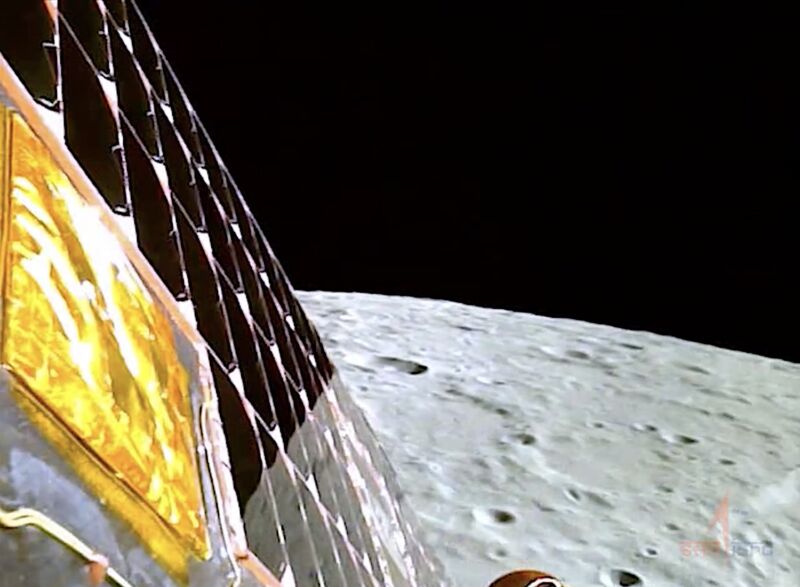In recent years the nation of India has embraced spaceflight as a means of establishing itself as a major geopolitical player. The Soviet Union and United States, of course, pioneered the use of space exploration to exercise soft power in the 1960s during the Cold War. More recently China has used its various space missions, both human and scientific, to bolster its international prestige.
And now India is seeking to do the same. Spaceflight not only helps out on the international stage, but domestically as well. After the Chandrayaan-3 spacecraft made a soft landing on the Moon in August, Indian Prime Minister Narendra Modi was able to bask in the reflected glory of the nation's space agency, ISRO. Modi also previously set into motion the Gaganyaan program to launch the country's first astronauts from its own soil.
With that milestone now possibly set to occur in 2025, Modi has set his sights higher and farther. After a high-level meeting this week to assess progress on the Gaganyaan mission, Modi's office released a statement outlining the country's ambitions in space over the next two decades.
The Moon, Mars, and beyond
"Building on the success of the Indian space initiatives, including the recent Chandrayaan-3 and Aditya L1 Missions, Prime Minister directed that India should now aim for new and ambitious goals, including setting up ‘Bharatiya Antariksha Station’ (Indian Space Station) by 2035 and sending first Indian to the Moon by 2040," stated Modi's office.
As part of the statement, Modi said Indian scientists would work toward a Venus orbiter mission and a Mars lander.
These are all fairly standard spaceflight goals, and India is following a tried and true path in the 21st century laid out by China. That country demonstrated human spaceflight for the first time in 2003, began construction on its Tiangong space station in 2021, and also landed its Tianwen-1 spacecraft on Mars that year. China now is working on a crewed lunar program with the approximate goal of landing its astronauts on the Moon around 2030.
By these measures, India is following a similar trajectory, albeit 15 to 20 years after its Asian rival. While most of India's aims are realistic, a big question is whether India will achieve its aim of sending an Indian to the Moon by 2040. And if so, how?
What rocket will be used?
The prime minister's statement is fairly vague on how India will achieve its lunar aims: "To realize this Vision, the Department of Space will develop a roadmap for Moon exploration. This will encompass a series of Chandrayaan missions, the development of a Next Generation Launch Vehicle, construction of a new launch pad, setting up human-centric Laboratories and associated technologies."
Basically, this is saying "to be determined." The statement mentions a Next Generation Launch Vehicle, however this rocket will be able to lift about the same mass to orbit as the Falcon 9 rocket. Based on recent updates, the new rocket is intended to have a lift capacity of about 20 metric tons to low-Earth orbit. This is not nearly powerful enough for lunar crewed missions.
Moreover, this new rocket is unlikely to fly before 2030 and is still in the basic phase of design. Reportedly, ISRO has not even decided whether its propulsion system will use kerosene or methane as propellant.
So this rocket will not be the vehicle that takes Indians to the Moon—such a rocket will require a longer process, perhaps taking a decade or so to design, develop, test, and ultimately fly. Indian officials have said nothing about such a super heavy lift vehicle.
To Artemis or not?
This leaves two possibilities for Modi's statement on the country's lunar ambitions. First of all, it could be a platitude that expresses the country's eventual goal of putting Indians on the Moon with its own spacecraft and rockets. The year 2040 is far enough into the future that it sounds like a nice goal but also requires that nothing immediately be done about it. This is sort of like NASA's goal to send humans to Mars by 2040. It sounds nice, but the agency is not undertaking the kinds of investments needed now to make it a reality.
The other possibility is that India embraces NASA's Artemis Accords further. Earlier this year India became the 27th country to sign these accords, a non-binding set of principles among like-minded nations guiding a vision for peaceful and transparent exploration of space. However, the specifics about what this cooperation between NASA and India will entail were very generic.
Some Artemis Accord partners, such as Canada, have already locked in formal partnerships. For example, Canadian astronaut Jeremy Hansen will fly on board the Artemis II mission in 2025, and one or more European astronauts are likely to fly in Moon-landing missions later this decade. India could easily find a way for one or more of its astronauts to reach the Moon as part of the Artemis program in the 2030s. And indeed, this would be a real coup for NASA and the United States, as India is a rising space power.
Alternatively, India could simply buy a private landing on Starship, which SpaceX is likely to begin offering after NASA's initial Artemis missions to the lunar surface. This seems less likely, however, as it would not be a natively developed project.



3175x175(CURRENT).thumb.jpg.b05acc060982b36f5891ba728e6d953c.jpg)
Recommended Comments
There are no comments to display.
Join the conversation
You can post now and register later. If you have an account, sign in now to post with your account.
Note: Your post will require moderator approval before it will be visible.